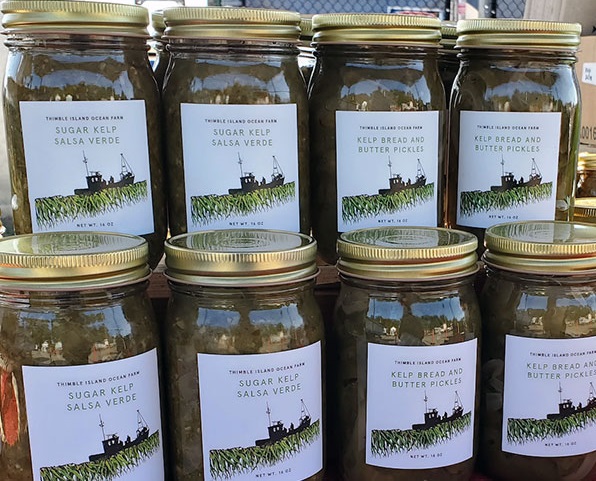In the Annual Operations track, we have courses dedicated to sales and marketing strategy for selling your kelp. This curriculum is organized by season, because the process of fostering connections to buyers and selling your product is a year-round activity.
Back to: Map Your Resources
Before you ever put seed on your farm, we recommend that you have a plan for what you’ll do with your kelp once it comes out of the water.
In Kelp Farming 101, we discussed the common sales channels for kelp. To recap, in general, most kelp farmers either direct market their product to individual consumers or sell to a wholesale buyer. Depending on which path you choose, your farm—and your lifestyle—could look very different.

Choose your sales strategy
If you choose to sell direct-to-consumer, you’ll also have to do the work of processing, packaging, and delivering the kelp directly to your buyer. This may require a separate set of permits, licenses, space, and equipment, especially if you’re selling your kelp for human consumption. Running this type of operation requires the continuous work of sales, marketing, and building your brand. The upside is you may be able to develop a new market for your product in your region if there aren’t already established buyers, and you’ll be able to capture more value from your crops.
GreenWave Tip
If you answered yes to these questions, then you might really enjoy building your own brand and selling directly to consumers. Some farmers thrive on the human connection of connecting with customers and sharing their products with their community. They feel energized by the excitement of their customers.
Other people prefer to stay behind the scenes and focus on the farm work. If that’s true for you, you might want to consider growing for a wholesale buyer. This type of arrangement allows you to focus on on-farm innovations and growing a high-quality product at scale and let someone else focus on the marketing and product development for your kelp. If you choose this route, you’ll be able to sell more volume but likely get a lower price. This means you might have to invest in a larger farm to make a profit.
-
Are you comfortable telling your story to strangers?
-
Do you like talking to people and sharing new ideas?
-
Do you like posting updates and connecting with people on social media?
Ultimately, the end use for your crop will impact how you design your farm, when you harvest, and how you handle your crop. Either choice is completely valid. What’s important is that you pick the path that’s best suited to your skills, preferences, and regional markets. Keep in mind that sales and marketing are entirely different skill sets than farming. Take a hard look at whether you’d enjoy these activities before you decide on an end market for your crops.
Watch this video on Suzie Flores of Stonington Kelp Co. in Stonington, CT, who used a grassroots approach to marketing her kelp business. She provides sales and marketing tips and shares her story on how she garnered business in her region.
WATCH VIDEO